by Oliver Balch 8 Dec 2020
Even before the new mine became the main topic of village conversation, João Cassote, a 44-year-old livestock farmer, was thinking about making a change. Living off the land in his mountainous part of northern Portugal was a grind. Of his close childhood friends, he was the only one who hadn’t gone overseas in search of work. So, in 2017, when he heard of a British company prospecting for lithium in the region of Trás-os-Montes, Cassote called his bank and asked for a €200,000 loan. He bought a John Deere tractor, an earthmover and a portable water-storage tank.
The exploration team of the UK-based mining company Savannah Resources had spent months poring over geological maps and surveys of the hills that ripple out from Cassote’s farm. Initial calculations indicated that they could contain more than 280,000 tonnes of lithium, a silver-white alkali metal – enough for 10 years’ production. Cassote got in touch with Savannah’s local office, and the mining firm duly contracted him to supply water to their test drilling site. The return on his investment was swift. After less than 12 months on the company’s books, Cassote had made what he would usually earn in five or six years on the farm.
Savannah is just one of several mining companies with an eye on the rich lithium deposits of central and northern Portugal. The sudden excitement surrounding petróleo branco (“white oil”) derives from an invention rarely seen in these parts: the electric car. Lithium is a key active material in the rechargeable batteries that run electric cars. It is found in rock and clay deposits as a solid mineral, as well as dissolved in brine. It is popular with battery manufacturers because, as the least dense metal, it stores a lot of energy for its weight.
Electrifying transport has become a top priority in the move to a lower-carbon future. In Europe, car travel accounts for around 12% of all the continent’s carbon emissions. To keep in line with the Paris agreement, emissions from cars and vans will need to drop by more than a third (37.5%) by 2030. The EU has set an ambitious goal of reducing overall greenhouse gas emissions by 55% by the same date. To that end, Brussels and individual member states are pouring millions of euros into incentivising car owners to switch to electric. Some countries are going even further, proposing to ban sales of diesel and petrol vehicles in the near future (as early as 2025 in the case of Norway). If all goes to plan, European electric vehicle ownership could jump from around 2m today to 40m by 2030.
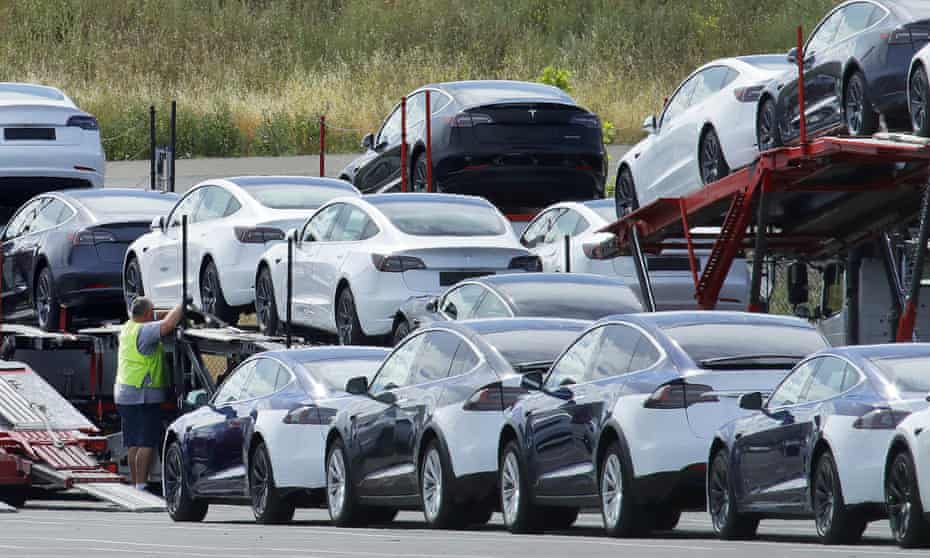
It is predicted that there will be 40m electric cars in Europe by 2030.
Lithium is key to this energy transition. Lithium-ion batteries are used to power electric cars, as well as to store grid-scale electricity. (They are also used in smartphones and laptops.) But Europe has a problem. At present, almost every ounce of battery-grade lithium is imported. More than half (55%) of global lithium production last year originated in just one country: Australia. Other principal suppliers, such as Chile (23%), China (10%) and Argentina (8%), are equally far-flung.
Lithium deposits have been discovered in Austria, Serbia and Finland, but it is in Portugal that Europe’s largest lithium hopes lie. The Portuguese government is preparing to offer licences for lithium mining to international companies in a bid to exploit its “white oil” reserves. Sourcing lithium in its own back yard not only offers Europe simpler logistics and lower prices, but fewer transport-related emissions. It also promises Europe security of supply – an issue given greater urgency by the coronavirus pandemic’s disruption of global trade.
Even before the pandemic, alarm was mounting about sourcing lithium. Dr Thea Riofrancos, a political economist at Providence College in Rhode Island, pointed to growing trade protectionism and the recent US-China trade spat. (And that was before the trade row between China and Australia.) Whatever worries EU policymakers might have had before the pandemic, she said, “now they must be a million times higher”.
The urgency in getting a lithium supply has unleashed a mining boom, and the race for “white oil” threatens to cause damage to the natural environment wherever it is found. But because they are helping to drive down emissions, the mining companies have EU environmental policy on their side.
“There’s a fundamental question behind all this about the model of consumption and production that we now have, which is simply not sustainable,” said Riofrancos. “Everyone having an electric vehicle means an enormous amount of mining, refining and all the polluting activities that come with it.”
In the tiny hamlet of Muro in Trás-os-Montes, Cassote has concerns of his own. The prospecting phase ended earlier this year, and his expensive new machinery is standing idle in his farmyard. Savannah is waiting for the final green light from the Portuguese government for its lithium mine. If approved, the company is promising to invest $109m in the project. It will also create a quarry like an open wound in the mountainside. Cassote doesn’t mind. He just wants to be back on his earthmover.
Not everyone shares Cassote’s enthusiasm for lithium mining. After three decades living in Amsterdam, Mario Inacio, a 50-year-old professional dancer, recently returned to his home in Portugal with plans to build a yoga retreat deep in the countryside – somewhere bucolic and isolated where guests could wake to the sound of birdsong.
Inacio and his partner, Milko Prinsze, had identified the perfect spot, an abandoned farmstead set in 47 acres of grassy wilderness in central Portugal. The main house would require considerable renovation, but the rest was exactly as they had imagined. Driving down the sinuous, bumpy driveway for the first time, Inacio dreamed of the changes they could make – extending the house off to the side, converting the outhouses into private living quarters, carving out a natural pool in the rocks. He pinpointed the spot for the yoga studio: a small rise with expansive views over the grounds and out to the hills beyond.
Six years after the couple first set eyes on the place, Quinta Da Lua Nova is now ready to open its doors to paying guests. The global pandemic is creating a shortage of international clients and making it difficult to fill the nine rooms, but a much greater worry hangs over the business in which Inacio has invested his life savings. Moving to one of the large ground-floor windows of his new home, he pointed to the lush expanse of open country outside. “Any of this could be exploited for lithium soon. Possible exploration orders hang over all of it.”
In the past few years, small groups of anxious residents have come together across Portugal, concerned about the government’s lithium plans. With few facts in the public domain, these groups started making inquiries to local planning departments and town halls. In Inacio’s case, he said that he was told his requests would be “passed on”. He never heard any more.
At the same time, early-stage exploration works, led by the likes of Savannah and the Portugal-based Lusorecursos, were reportedly sighted across the country. An objector unearthed a technical assessment of Portugal’s lithium resources commissioned by the energy ministry in 2016. Eventually, a government spokesperson confirmed that discussions were under way with various mining companies, but said no firm decisions had yet been made.
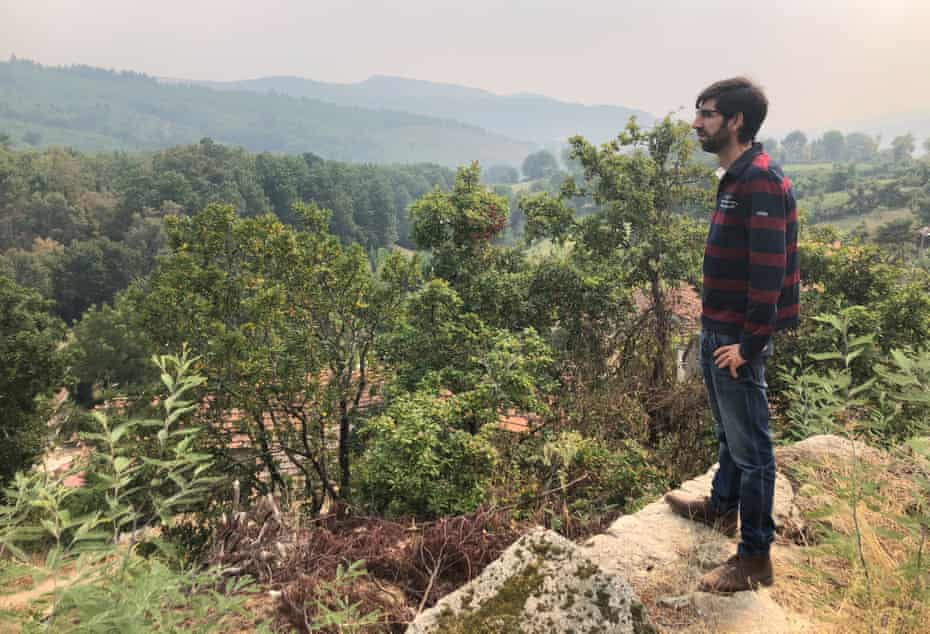
João Cassote near the site of a proposed lithium mine in northern Portugal.
Then, in January 2020, a map began circulating among the various WhatsApp and Facebook groups set up by concerned residents like Inacio. The map, put together by a local software developer specialising in cartography, appeared to confirm their worst fears. A tapestry of geometric shapes spread across the country’s interior, abutting designated nature reserves. A series of local and national protests, including a march in Lisbon last year, sought to raise awareness about the impacts of modern mining on the natural environment, including potential industrial-scale habitat destruction, chemical contamination and noise pollution, as well as high levels of water consumption. They also raised concerns about the impact on tourism – an economic mainstay for the country’s interior, with an annual turnover of €18.4bn in 2019.
All these concerns appear in a “national manifesto” recently published by a coalition of civic movements. Despite vociferous local media coverage, they have made little impact so far. In part, this reflects the relative weakness of the national environmental movement. Portugal is one of the few countries in Europe not to have a Greenpeace affiliate, for instance, and according to an EU survey, of all European consumers, the Portuguese are the least likely to pay more for eco-branded products.
For Maria Carmo, a 43-year-old university lecturer from the village of Barco, in the central district of Castelo Branco, such lack of engagement reveals the alienation that most urban or coastal-dwelling Portuguese feel towards the country’s rural heartlands. The trend in the past 50 years or so has been one of continued rural depopulation. Hundreds of thousands of people have left Portugal’s poor and already under-populated interior for new lives abroad or in the country’s coastal cities. Few of them return.
If a mining licence is granted in their region, Inacio and a small core of diehard supporters are prepared to fight it in the courts. Carmo is less sure. Her campaign group in Castelo Branco has already split, with half its members now open to the possibility of an open-pit lithium mine above her village. It will happen anyway, they say, so why not negotiate some guarantees? Barco used to have a tin mine, the villagers argue, and it wasn’t so bad.
But Carmo feels it’s a mistake to compare the two operations. Her own father and grandfather both worked in the Argemela tin mine outside the village before it closed in the early 1960s. Back then, mining was small-scale and subterranean. A new mine, in contrast, could see half the hill disappear, potentially damaging the remains of a bronze-age settlement on its peak. Villagers also fear that chemical runoff will pollute the nearby Zêzere river, which they depend on for their crops.
After a three-year struggle, Carmo is exhausted and ready to give in. She feels the government is deaf, and that her fellow citizens aren’t interested. “So much destruction,” she said. “And for what? So eco-minded urbanites in Paris and Berlin can feel good about driving around in zero-emission cars.”
Advocates of Portugal’s hoped-for lithium boom argue that local disruption is a small price to pay for tackling the climate crisis. They point out that innovations such as windfarms, solar energy parks and hydroelectric plants, while contributing to lowering CO2 emissions in the long term, all have some impact on local populations. In a note to investors, Savannah observes that its proposed mine (which boasts projected revenues of US$1.55bn over its initial 11-year lifespan) will contribute to enough battery packs to prevent the emission of 100m tonnes of carbon dioxide.
Savannah’s chief executive, David Archer, goes even further. Speaking from his London office, he pitched his firm’s multimillion-dollar investment as advancing the overall “quality of the global commons”. The equation he offers is simple: lithium equals batteries, which equals electric cars, which equals an end to transport emissions, which equals a world less vulnerable to today’s climate emergency. He adds the prospect of new jobs in the local area (up to 800 in Trás-os-Montes), higher tax revenues and a €437m boost to Portugal’s economy. From a development perspective, he said, it’s a “no-brainer”.
The Portuguese government concurs. In a promotional video targeted at foreign investors, the secretary of state for the environment named his country “one of the world’s leaders in energy transition”. The short film stresses the current government’s “strong commitment” to a policy of eco-innovation.
Objectors say that where there is profit to be made, local environmental impacts are almost always overlooked. The same dilemma has set back international climate talks for decades, said Harjeet Singh, global climate lead for the campaign group ActionAid. The global north wants stricter emissions targets; the global south wants economic development now, and reasonably feels that the burden of tackling the climate crisis should fall on the post-industrial societies primarily responsible for causing it. “Green technologies are essential for the transition to renewable energy,” Singh said, “but they are not without negative impacts [and] we need to ensure these don’t always fall on the poorest and most marginalised communities.”
In Chile, the battle over the impact of mining has been going on for years. Born and brought up in the copper-producing region of O’Higgins in central Chile, community activist Ramón Balcázar, now 36, became aware of the potential damage of large-scale mining at an early age. Long-running disputes – over land use, water rights and chemical contamination – provided the background to his youth in the 90s. Then, six years ago, he moved to the northern outpost of San Pedro de Atacama. On the lip of the country’s famed Andean salt flats, the town looks out to a coarse, sun-baked carpet of crystalline whites and smudgy grey. There, under this huge, cloudless desert sky, Balcázar finally felt able to breathe freely.
He did not know it, but he had walked into another battle zone. San Pedro lies on the westernmost point of a mining area that spreads north across the Atacama desert to Bolivia and east into Argentina. Fifty times drier than California’s Death valley, the area’s parched surface conceals an underworld rich in minerals. Historically, mining companies have exploited its lucrative deposits of copper and, to a lesser extent, iodine and nitrates. By some estimates, it also contains as much as half the world’s lithium reserves. In the early to mid-2010s, when talk of lithium-ion batteries began circulating in every mining town, a raft of new licences were requested, investments made, and extraction facilities expanded. The area became known as the “lithium triangle”.
The mining companies insist their operations are sustainable. Balcázar, speaking from Mexico City, where he is studying for a graduate research degree, said they have no evidence for this claim. No one knows what effects lithium extraction on such a large scale will have on the Atacama’s fragile natural ecosystem. Unlike in Portugal, lithium here is found in brine, so the mining operations use no dynamite and no earthmovers, and threaten to leave no unsightly craters. Instead, they consist of a series of large, neatly segregated evaporation pools filled with millions of litres of brine that have been pumped from below the surface and left to evaporate in the sun.
The fears of residents like Balcázar are focused on the area’s cavernous, subterranean aquifers, from where the brine is pumped. Here, they maintain, a disaster is unfolding. There is a risk that the reserves of clean water, which are found in a separate layer above the brine deposits, may become contaminated.
Balcázar has been working with the Plurinational Observatory of Andean Salt Flats, a network of expert scientists and concerned citizens, to chart changes to the local ecology. The weight of their evidence – shrinking pasturelands, failing crops, disappearing flora and fauna – all point towards a process of desertification which they believe is exacerbated by lithium extraction. The impact of disturbing a “huge, complex hydrological system” is not visible from one day to the next, said Balcázar. “But the two are interlinked, without any doubt.”
Plans by lithium mining firm SQM to expand its operations were recently blocked by a Chilean court on environmental grounds, but almost every other effort to get the backing of the authorities has failed. In Chile, Balcázar said, certain territories and natural environments have always been “sacrificeable” in the name of progress.
While mining firms scour the world’s deserts and countryside for lithium concentrate, a parallel search is on to find ways of producing battery-grade lithium without sending in the diggers. On an industrial estate surrounded by fields in rural Saxony, Christian Hanisch set out to discover a solution in recycling. “What if, instead of extracting virgin lithium from the ground, we use what we already have?” he said. Half a million tonnes of lithium has been extracted and refined in the past decade, much of which now sits in discarded mobile phones and laptops approaching obsolescence.
In his modest first-floor office at Duesenfeld, the company he co-founded while working on his PhD at Braunschweig University of Technology, Hanisch, 37, admitted that the logistics are challenging. The lithium-ion batteries in everyday devices are typically small and fiddly, so to make his venture viable, Hanisch decided to start big, with used electric car batteries (which each contain about 8kg of reusable lithium). He pointed out of the window, where several recently delivered samples were piled up on the tarmac outside the factory next door, each the size of a chunky mattress.
Removing the battery’s heavy plastic casing is easy enough; the challenge is how to access the lithium inside the battery cell itself. Currently, two main options exist: either heat the components to about 300C to evaporate the lithium, or apply acids and other reducing agents to leach it. Both approaches are complicated by lithium’s extreme volatility (it is prone to exploding) and its amalgamation with other metals (which are added in for better conductivity).
With market analysts predicting a potential 12-fold increase in the value of the global lithium recycling industry over next decade, to more than $18bn by 2030, competition among recycling innovators is hotting up. In Germany alone, Duesenfeld faces competition from at least three other early-stage lithium recyclers. Across the border in Belgium, a former smelting firm turned urban waste recycler, Umicore, is developing its own technology, but releasing no details. Another significant European player is Snam, in France.
Hanisch is confident that his procedure has an edge. Rather than smelting (which is highly energy intensive) or leaching (extremely toxic), Duesenfeld’s approach is based on mechanical separation. This method involves physically breaking the battery down into its component parts and then extracting the residual lithium via a combination of magnetisation and distillation.
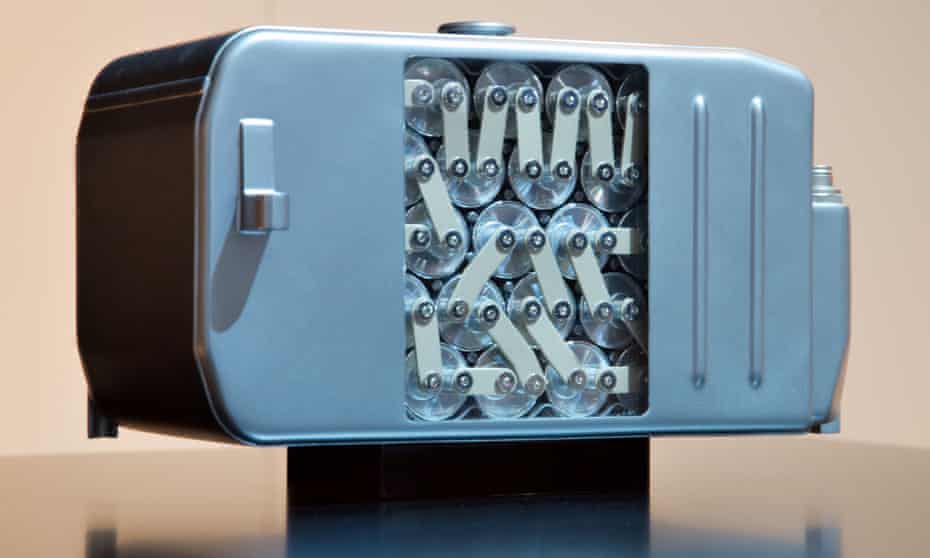
A lithium ion battery from a Mercedes S-Class hybrid.
In the company’s factory, amid a cacophony of whirring and clanking, a submarine-like cylindrical contraption (“that’s the crusher”, shouted Hanisch through the ear protectors clamped to my head) occupies the back wall. Filling the space between is a jungle of pipes, funnels and conveyor belts punctuated by worktops. Quite where the production line begins or ends is unclear. Hanisch regarded his invention with a blissful expression. “It’s noisy,” he conceded, “But it’s the greenest way of recycling lithium there is.”
Hanisch was brought up in a farming family in rural Lower Saxony, a background that inspired his environmental ambitions. Earlier this year he launched a consultancy venture, No Canary, advising on low-carbon methods for producing not just a battery, but an entire electric vehicle, from the materials stage through to final disposal. “Greta [Thunberg] was right”, he told listeners to his inaugural webinar. “We aren’t moving nearly fast enough on decarbonisation.”
Shifting away from petrol and diesel is not the only concern. Manufacturing any car, electric or otherwise, causes carbon emissions, be it from the coal used to smelt the steel for its body work or the diesel oil burned when shipping its electronic components across oceans. The extra materials and energy involved in manufacturing a lithium-ion battery mean that, at present, the carbon emissions associated with producing an electric car are higher than those for a vehicle running on petrol or diesel – by as much as 38%, according to some calculations. Until the electricity in national grids is entirely renewable, recharging the battery will involve a degree of dependence on coal or gas-fired power stations.
Lithium accounts for a small part of the battery’s cost, which means there is less incentive for manufacturers to find an alternative. As it is, recycling lithium costs more than digging it out of the ground. For Hanisch, one of the chief costs comes at the end of the process: converting the recovered lithium from its recycled state (lithium sulphate) into a battery-ready form (lithium carbonate). Without the resources to build his own chemical plant, Duesenfeld sends his end product – a grainy composite of precious metals known as “black mass” – to a hydrometallurgical facility for final processing.
For existing recycling plants, lithium is not where the money lies, said Linda Gaines, an expert in battery recycling systems at Argonne National Laboratory in Illinois. As she said: “The main purpose is to recover the cobalt, as well as nickel and copper. The lithium doesn’t add much.”
As with wind turbines and solar panels, the price of recycled lithium will very likely come down as battery manufacturers scale up. Supposing this proves true, there’s a huge supply-demand imbalance to get over. Before the pandemic, total sales of electric vehicles were projected to more than quadruple in the next five years, to more than 11m units. Demand for lithium will rise accordingly, with one industry estimate suggesting annual consumption could easily reach 700,000 tonnes by the middle of this decade. So, even if Duesenfeld and its competitors were able to recycle every last ounce of lithium produced in the last decade, come 2025, it would only be enough to power new electric vehicle batteries for nine months.
As it turns out, the recession caused by the pandemic may have granted campaigners a reprieve, halting the immediate need to open new lithium mines. With the world facing a prolonged crisis, new cars – even eco-friendly ones – are not at the top of most people’s priorities. As manufacture has slowed down, a glut of lithium on global markets has dampened the white oil boom, if only temporarily.
But investors remain bullish about lithium’s long-term prospects. With a change of regime in the White House, there is hope for renewed support for measures to tackle the climate crisis. In the fortnight after the US election, the stock price of Chile-based lithium mine company Albermarle rose by more than 20%. In the UK, Boris Johnson’s announcement about bringing forward a ban on new diesel and petrol cars to 2030 gave the market a boost.
The European commission still wants a lithium industry to call its own. In September, the Slovak diplomat and a commission vice-president Maroš Šefčovič publicly endorsed Portugal’s plans as “necessary” for the automotive sector. What’s more, the European Investment Bank would be on hand to help, he promised. His comment chimed with the launch of a new EU strategy on raw materials, which, among other goals, seeks to increase Europe’s lithium supply 18-fold by 2030, while reducing Europe’s dependence on third-party countries.
This is discouraging for the opponents of lithium mines in Portugal, but Šefčovič offered them a crumb of comfort. The decision to mine has to be taken in dialogue “with local communities”, he asserted, adding that “we need to assure these communities that these projects are not only of the greatest importance, but will also benefit the region and the country”.
The modern corporate responsibility movement is built on such logic. First, it does not promise to eliminate all negative industrial impacts. Instead, it pledges to “manage” them, and then to balance out any damage with compensatory “benefits”, to use Šefčovič’s phrase. In the case of Savannah’s mine in northern Portugal, the company concedes there will be local environmental impact, but argues that it will be outweighed by the upsides (inward investment, jobs, community projects).
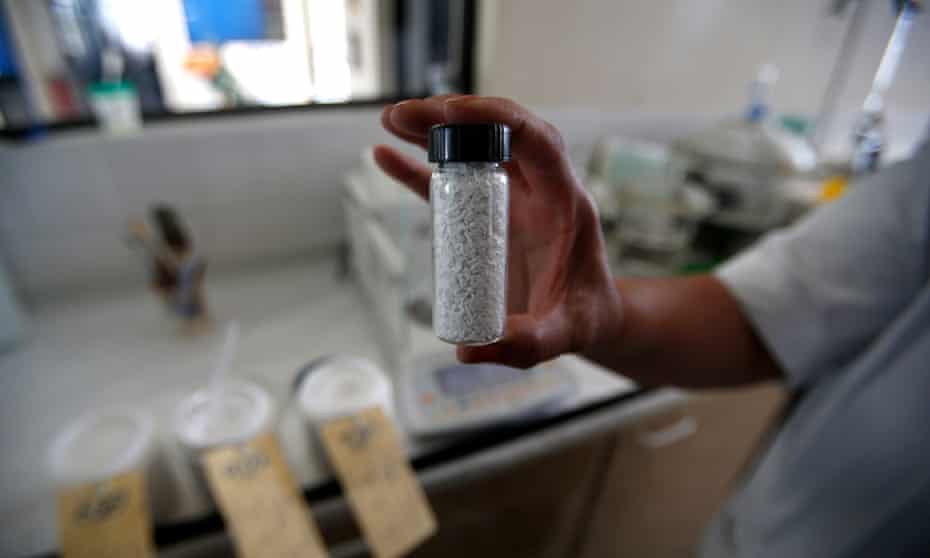
A sample of lithium carbonate processed from the Rockwood mine in Chile.
Godofredo Pereira, a Portuguese environmental architect based at the Royal College of Art in London, is sceptical. His first-hand observations of the exploitation of Chile’s salt flats suggest that offers of dialogue can be superficial. Even in Atacama, where international accords give indigenous groups the right to “free, prior, informed consent”, detractors such as Balcázar struggle to be heard. Instead, the view of pro-mining community groups is taken as universal. If necessary, the obligation to gain consent can be weakened simply by defining lithium as a mineral of “strategic” or “critical” national value – which is easy enough, given lithium’s contribution to slowing global heating and cleaner air.
Nor, very often, do the promised trade-offs turn out to be quite what they initially seem, according to Pereira. The voluntary nature of corporate responsibility means mining firms can backtrack if it suits them. Even when local groups succeed in negotiating a fixed royalty (3.5% of sales, in the case of one major extractor in Atacama), communities frequently split in the subsequent fight for the spoils.
Digging up Portugal’s mountains in the name of green technology may still be avoidable. An alternative, less controversial technology could break on to the scene. Green hydrogen, for instance, could help offset up to 10% of Europe’s emissions. A more immediate solution would be to rethink how we get around. As Thea Riofrancos at Providence College pointed out, if everyone were to adopt “rational forms of transport” – such as trains, trams, e-buses, cycling and car-sharing – then demand for passenger vehicles of all kinds would shrink overnight.
For Portugal’s anti-mining groups, however, the clock is ticking. Godofredo argued that citizens must demand a dialogue, in order to “get a conversation going about what model of development we want”. If people were better informed, he reasoned, it’s just possible that public opinion could swing to their side, and the country’s lithium mining plans could get shelved. In this regard, recent demands by Portugal’s Green party for a national impact evaluation of mining policy is promising.
Portugal’s protesters can see that blocking green growth won’t get them far. These interior regions need investment. Hence the banner hanging from the playground fence in João Cassote’s neighbouring village, which reads “Sim à Vida” (Yes to life) beside “Não à Mina” (No to the Mine). “Life” for opponents of the mine, including Mario Inacio and Maria Carmo, is eco-tourism, regenerative farming, local supply chains, and other tenets of low-carbon living. For Cassote, it means a decent wage for a decent day’s work. For a green future, it’s going to be vital to accommodate both visions.
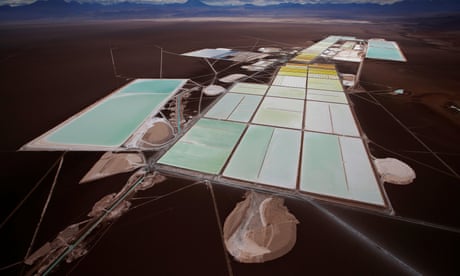
Sem comentários:
Enviar um comentário